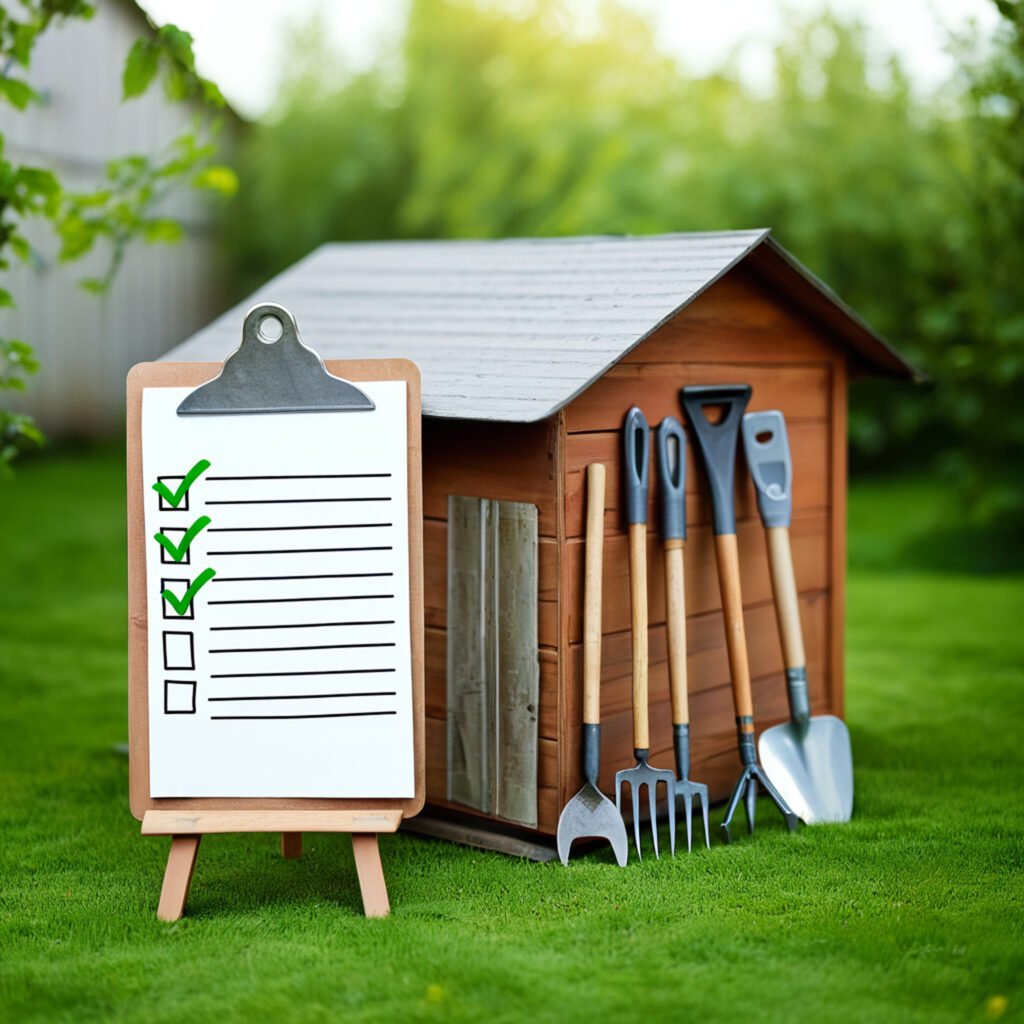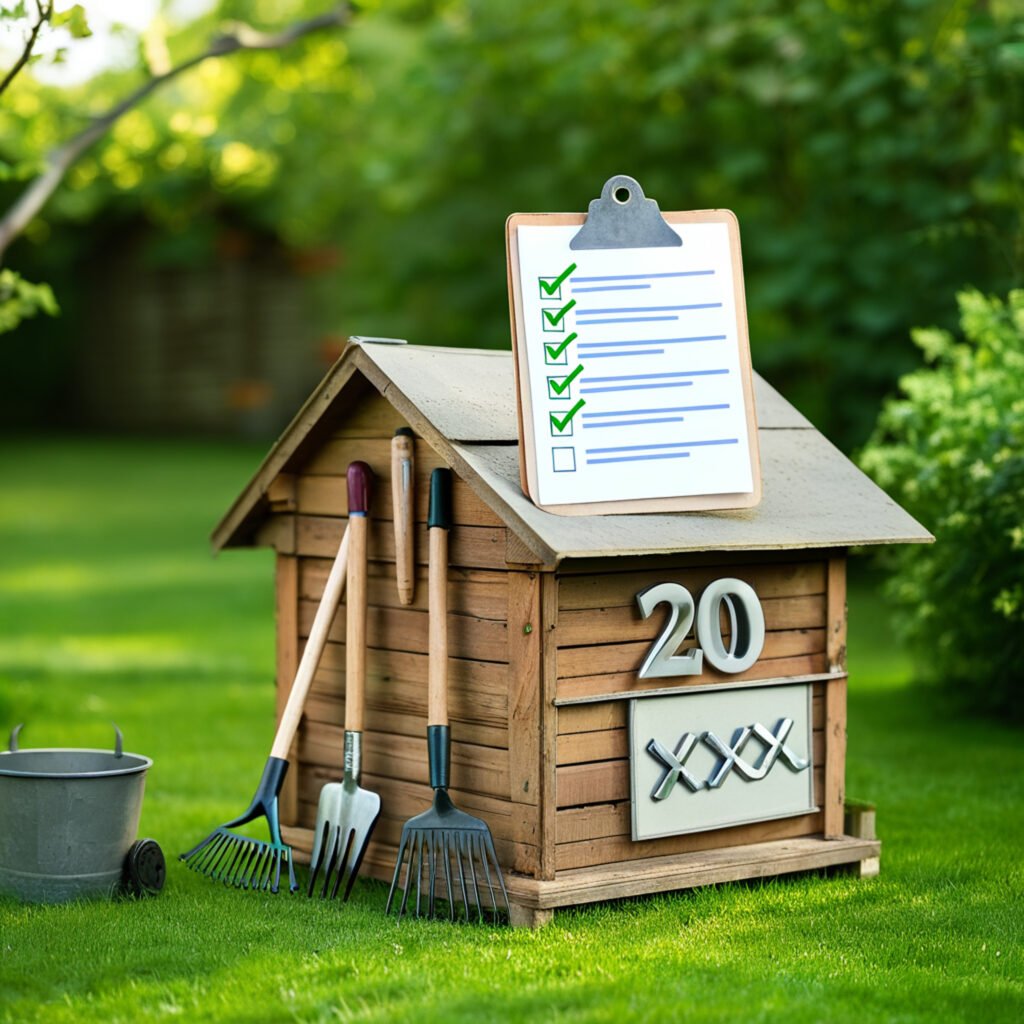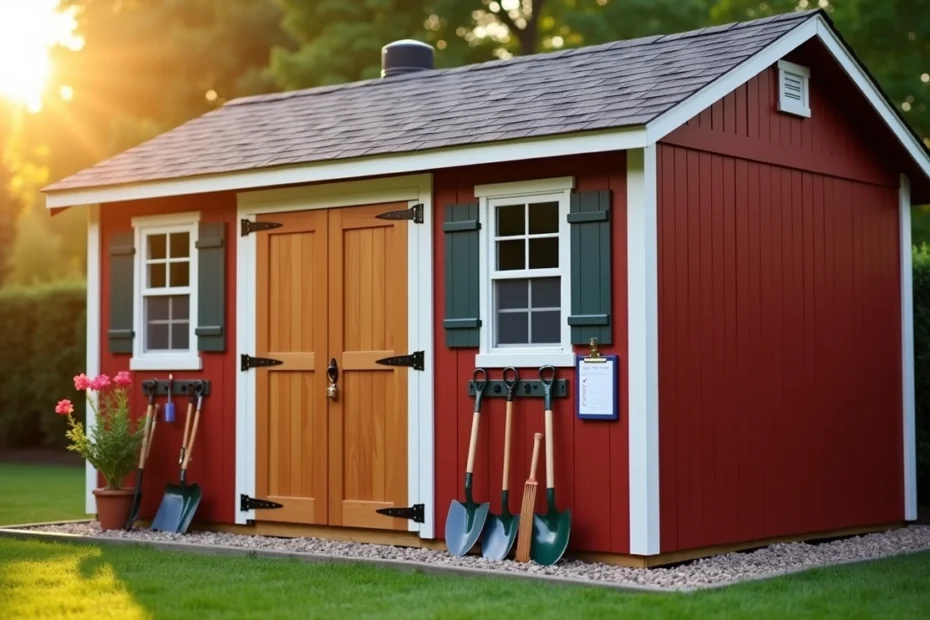My 20 years of shed ownership taught me a tough lesson about skipping my shed maintenance checklist. Poor upkeep leads to early wear, repairs that get pricey, and structural problems that anyone could prevent. Small issues like minor leaks, tiny cracks, and poor ventilation turned into major expenses that gave me headaches.
Years of learning the hard way helped me create a maintenance routine that protects my investment and saves money. A proper annual home maintenance checklist helps your shed last longer and hold its value. Let me share what I’ve discovered about making a year-round checklist that works. The biggest reason to have this checklist is simple – you’ll get more life from your shed and catch those sneaky leaks and breaks before they become problems.
The First Lessons: What I Got Wrong in Early Shed Maintenance
When I look back at my early days of owning a shed, I cringe at some mistakes that got pricey. These could have been avoided with a proper shed maintenance checklist. My experience showed me that small oversights often create bigger problems later.
Ignoring small cracks and leaks
My original response to tiny roof leaks was to dismiss them as minor inconveniences. I wondered how much damage a small water stain could do. This turned out to be my most expensive mistake. Small leaks let moisture seep into wood. The water weakens materials and spreads throughout the structure. A simple fix can quickly turn into major damage. The trapped moisture rotted my shed’s wooden beams, damaged the roof’s structure, and created perfect conditions for mold growth.
Underestimating the importance of ventilation
Proper ventilation seemed less important at first – but it’s actually crucial for shed maintenance. Poor airflow in my shed led to serious moisture problems. Humidity created condensation on walls and tools. Metal equipment started rusting faster, and mold grew everywhere. I found that ventilation helps preserve the shed’s structure and everything inside. It prevents moisture buildup and lets humid air escape.
Skipping seasonal inspections
My habit of skipping regular seasonal inspections caused the most damage. I waited for obvious problems instead of finding issues early. This approach wasn’t the quickest way to handle maintenance and cost more money. Seasonal home inspections act as insurance – small, predictable costs prevent big, unexpected expenses. Regular checks would have spotted clogged gutters, loose shingles, and worn weather stripping before they became serious problems.
These tough lessons taught me that a complete maintenance shed routine should catch problems early. A good annual home maintenance checklist doesn’t just fix what’s broken – it prevents things from breaking. Learning everything in the maintenance checklist changed how I take care of my outdoor structures. These early mistakes showed me that consistency matters most. Maintenance belongs on your regular calendar rather than being a response to emergencies.
The 8 Essentials I Now Swear By

I’ve learned from my shed maintenance mistakes over the years and created a system that keeps my structure in great shape. These eight must-do tasks are now part of my shed maintenance checklist. They’ve saved me a lot of time and money that would have gone into repairs.
1. Inspect the roof, walls, and floor every season
My seasonal inspections serve as the first defense against problems. Each season brings its own challenges to your shed’s structure. I check for damaged shingles, look at flashing for cracks, and search for signs that water might be getting in. The seams where walls meet the roof need extra attention since leaks often start there. The floor gets a good look too – any rotted or damaged boards get replaced right away.
2. Seal windows and doors to prevent drafts and leaks
Windows and doors develop gaps that let moisture and pests sneak in. I’ve found that caulk works great to seal these openings, and weather stripping helps improve insulation. Doors that don’t close properly get tubular silicone weatherstripping because it lasts longer and flexes better. The area where the door frame meets the wall needs silicone sealant to keep water out.
3. Keep the shed clean inside and out
A clean shed works better. My monthly routine includes sweeping the floor to get rid of debris that could cause mold and mildew. The walls get a wash with a garden hose once or twice a year to stop mildew and sap from ruining the siding. Regular cleaning makes it easier to spot issues during checkups.
4. Use shelving and hooks to organize tools
A good organization protects your tools and makes them easy to reach. Shelving units keep everything off the floor, which makes cleaning and inspections simple. Wall hooks work great for spray bottles and gardening gloves. Magnetic strips are a great way to keep metal hand tools visible and within reach.
5. Apply waterproofing treatments annually
A fresh protective coating each year has made my shed last much longer. Waterproof sealant goes on all exterior surfaces, with extra attention to areas that get more wear, like the roof, siding, and trim. Wood siding needs this treatment to create a barrier that stops moisture and prevents rot.
6. Install proper ventilation to avoid mold
Ventilation plays a vital role in controlling humidity. Mesh-backed vents sit high on each gable wall to let air flow through. Ridge vents at my apex roof help hot air escape. This setup stops condensation from damaging the shed and everything inside it.
7. Keep pests out with proactive measures
Pest control starts with keeping the area around the shed trim and neat. The shed’s exterior gets checked for gaps that I seal with wire mesh or expanding foam. Birdseed and pet food stay in rodent-proof plastic containers. These steps have kept pest problems way down.
8. Secure your shed with locks and alarms
Security rounds out my maintenance checklist. Hinge bolts make the door impossible to remove, even if someone messes with the hinges. Hardware like hinges, locks, and handles needs regular checks and lubrication. Motion-activated security cameras send alerts straight to my phone, which has been really helpful.
How I Built My Annual Shed Maintenance Checklist
A game-changing system transformed my shed maintenance experience. Understanding the work to be done helped me create a method that prevented tasks from slipping through the cracks.
Breaking tasks into monthly, seasonal, and yearly
My maintenance tasks are organized by frequency to manage everything without feeling overwhelmed. Monthly tasks include quick visual inspections, cleaning spills, and checking for pests. Each season brings unique challenges to the structure, so seasonal tasks focus on full inspections, repairs, and roof checks. The yearly maintenance covers fresh protective coatings, renewed caulking around openings, and detailed structural inspections.
Using a printed checklist on the shed door
The best maintenance plan fails without reminders. A printed checklist hangs inside my shed’s door. This simple solution will give a clear view of essential tasks every time I enter. Different colors highlight seasonal priorities, which makes focusing on current needs easier.
How do I make a maintenance checklist that works year-round?
Consistency makes all the difference. Your shed’s specific needs throughout changing seasons should shape a detailed list. The tasks need manageable intervals that match your schedule. Things won’t get out of hand with a proactive approach to household chores. Regular upkeep prevents bigger, more time-consuming problems from developing.
What I’d Tell My Younger Self About Shed Care

My first conversation with my younger self would focus on shed maintenance if time travel were possible. My years of experience have taught me lessons that could have prevented many expensive mistakes and frustrations.
Don’t wait for problems to appear
I learned to stop fixing things only when they broke. This fundamental change in my approach moved me from reactive to proactive maintenance. Prevention is nowhere near as expensive as repairs. A shed maintenance checklist serves as more than documentation – it helps plan finances better. Regular inspections helped me catch small problems before they turned into costly nightmares. This strategy ended up reducing my annual maintenance costs by 60-70%.
Invest in quality materials early
Looking back, I regret choosing the cheapest materials to save money upfront. My components needed replacement much sooner because of this short-term thinking. Premium paint, hardware, and roofing materials might cost more at first, but they make your shed last much longer. To cite an instance, see how quality weather stripping around doors and windows handles moisture damage better than cheap alternatives.
Treat your shed like part of your home
My most valuable insight came from a simple mindset change – your shed needs the same attention as your house. I used to think of my shed as “just a storage space” and neglected it. Everything improved when I started seeing it as my home’s extension and added it to my annual home maintenance checklist. This new perspective enhanced my shed’s condition, usefulness, and property value.
Conclusion
My twenty years of shed ownership taught me that regular maintenance isn’t just helpful—it’s vital. The experience from being a careless beginner to becoming a proactive caretaker wasn’t smooth. These hard-earned lessons saved me thousands in repairs that could have been prevented.
Good inspections are the foundation of proper shed care. Small problems can turn into major structural failures if you wait too long. This transformation from reactive to proactive completely changed how I manage my shed.
Quality materials matter way more than I first thought. Higher spending on weather-resistant paints, proper ventilation systems, and solid hardware pays off through longer life and lower costs over time. These investments, combined with regular seasonal maintenance, protect my shed’s structure and its contents.
An organization does more than keep things tidy. Good shelving, hooks, and storage solutions make inspections easier while keeping tools and equipment safe. This setup helps spot potential problems before they get worse.
Your shed needs to be part of your home’s maintenance schedule. A well-kept shed adds value to your property, gives reliable storage space, and lasts longer. I keep a printed checklist inside my shed’s door as a reminder of work to be done—a simple system anyone can use.
The ideal maintenance checklist might look like extra work now. Your future self will thank you for the protection, savings, and peace of mind it gives. Start taking care of your shed today and enjoy the benefits for decades.
